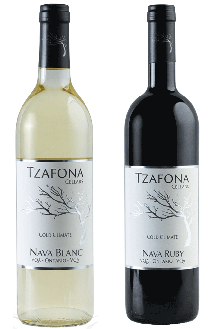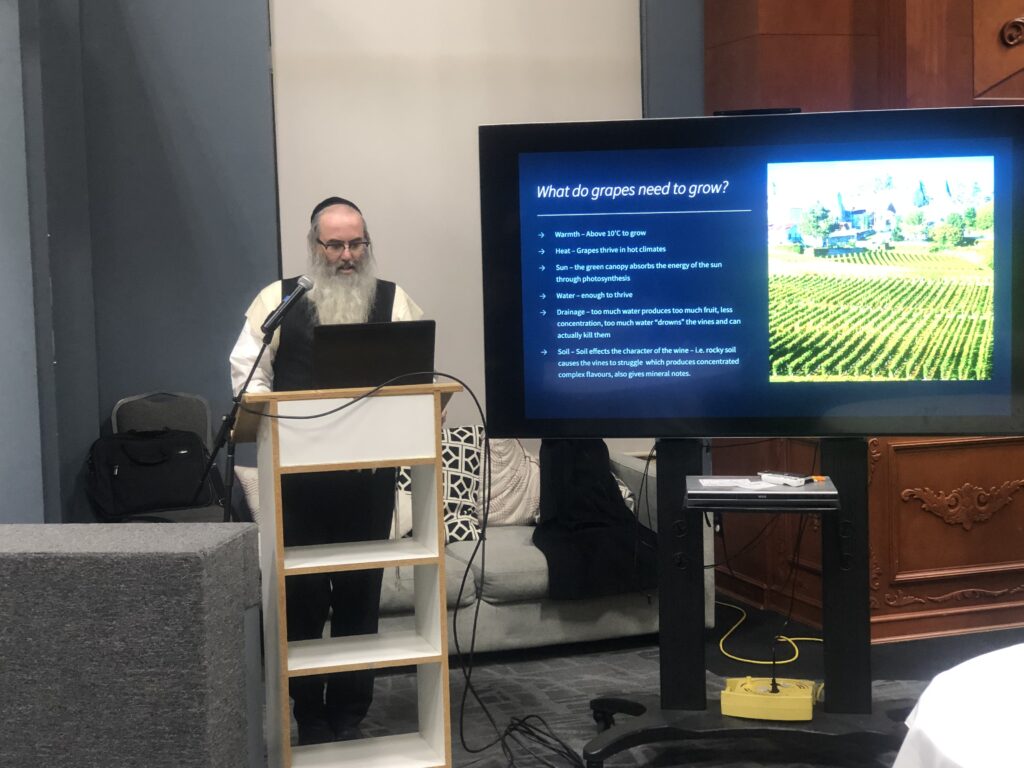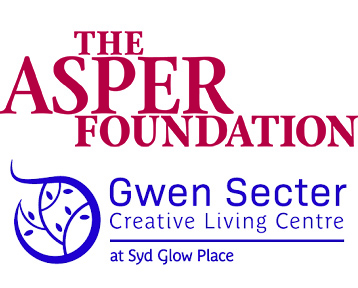Local News
Gail Asper takes on new challenge as co-chair of major Hebrew University fundraising campaign

By MYRON LOVE Over the past 35 years Gail Asper has risen to the top ranks among Canadian philanthropists and as the go-to leader for high-profile fundraising campaigns. In her 30s, she notes, she chaired a successful Manitoba Theatre Centre fundraising campaign. In her 40s she was the youngest chair of our city’s annual United Way campaign. In her 50s she served for two years as chair of our Jewish community’s annual Combined Jewish Appeal. And, I am sure that most readers are aware of her herculean effortsbringing to fruition her father’s vision of a world class human rights museum in Winnipeg.
Now in her 60s, Asper has taken on a lead role in another major fundraising campaign – one of international scope – as co-chair of an upcoming Hebrew University campaign, which is set to launch in October.
“My dad (the late Israel Asper – Gail’s role model) always told me,” she recalls, “that when you are asked to do something, while you can’t guarantee success, you do the best you can.”
This year’s campaign will be a particularly significant one for Israel’s oldest and largest university. This year mark’s the Hebrew University’s 100th anniversary – and the Asper family has played a leading role in the university for almost 50 years.
Gail Asper remembers going to Jerusalem – with her father – and family – when she was in her 20s – when Israel Asper would be attending HU annual Board of Governors meetings. “I met the president of the university,” she recounts. “I got to see what the university was doing and got to know the people on the board. There were board members from all over the world, all accomplished and interesting people.. It was so glamourous.”
In 1989, her father – after more than 20 years on the board – told Gail that he was stepping down to spend more time building the still relatively new Canwest business – and suggested that she should replace him as a board member. Not only did she join the board, she also became one of the founding members of the newly formed Canadian Friends of Hebrew University Business and Professional Division, along with other now prominent community members Howard Morry and Murray Palay.
“I remember being on the phone, back in 1993, holding my baby Jonathan in one arm while going through my phone list selling tickets for our gala,” Asper says. “It was good training for being able to manage looking after my family, work and volunteering later in life.”
It wasn’t long after she joined the Hebrew U board that she moved on to join the board executive,” she notes. “We would have meetings in Israel three or four times a year. Thank goodness now for Zoom. But I really enjoyed meeting with fellow board members as well as university management and faculty.”
Asper says that she was really surprised to be asked to chair the new campaign. “Most of the major HU donors are American,” she explains. “I thought that an American chair would be more appropriate than a Canadian,” she says.
She agreed to take on the role, but insisted on having an American co-chair. The individual she chose is a prominent American trial lawyer from Los Angeles by the name of Patty Glaser.
“I have known Patty for years,” Asper reports. “We met through the Hebrew University. She is very well organized and a terrific fundraiser.”
Asper adds that she would also like to recruit an Israeli philanthropist as a third chair. “There are a lot more wealthy Israelis today,” she observes. “I think it is important to get an Israeli more involved. We identified a few prospects and narrowed it down to a HU alumnus who has been very successful.”
Asper officially takes up her new role in October 2025, coinciding with the investiture of the incoming president, Prof. Tamir Sheafer. “We don’t have many details about the 100th anniversary campaign,” she notes. “The target for the last seven-year campaign – which ended in June – was $1 billion. We co-chairs will have discussion with the new president as to our financial goal and how the funds will be distributed.”
One area that Asper suggests will be a focus of the new campaign will be Jewish philanthropists and foundations who had been supporting American and Canadian universities, but who have been told that since October 7, 2023, their donations are no longer welcome. “Others have pulled their donations because of anti-Jewish activity on campuses,” she points out. “We will be suggesting that their donations will be better spent supporting Israel’s leading universities rather than antisemitic universities in Canada and the US.”
She adds that she will be co-ordinating the Canadian contributions to the campaign with CFHU executive director (and former Winnipeg resident – while he was executive director of the Canadian Friends of the Hebrew University here) Rami Kleinmann. “In Canada, we always punch above our weight,” Asper notes.
She does admit to be disappointed that the HU’s 100th anniversary celebrations scheduled for last June had to be cancelled because of the war with Iran. “Anita Wortzman (the Asper Foundation’s executive director) and I were already in Israel,” Asper reports. “I had planned to attend every program on campus, meet the donors and scientists and scholars and learn what they are working on.”
She is looking forward to making up for some of what she missed in June with her upcoming visit to Israel in the fall and the kick-off to the campaign.
Local News
Canadian produced kosher wine now available in Winnipeg

By BERNIE BELLAN With the imposition last February of a ban on the sale of American liquor in Manitoba, the only type of kosher wines that were available here were from Israel, specifically wines produced by the Galil winery.
Since the latter part of September, however, kosher wines produced by a Canadian winery are now available in Manitoba liquor marts, also the Kenaston Wine Market.
The wines – a red and a white, are produced by a winery known as Tzafona Cellars – located in the Niagara region of Ontario.

On Tuesday, December 2, Rabbi Avraham Gislason, who is a a rabbi in Thornhill, as well as a Tzafona Cellars winemaker, spoke to a large crowd at the Jewish Learning Centre, where he not only explained how kosher wine differs from non-kosher wine, he brought along bottles of five different wines produced by Tzafona Cellars for members of the audience to taste.
So – what makes a wine kosher? you might ask. According to the internet, “A wine is kosher if it is made according to Jewish dietary laws… with strict supervision and handling by Sabbath-observant Jews from the crushing of the grapes to the bottling of the finished product. The winemaking process must use only kosher-certified ingredients, such as yeast and fining agents, and rabbinically-approved equipment.
Rabbi Gislason himself started Tzafona Cellars in 2014. According to the Tzafona website, Rabbi Gislason saw that the “soil, air, and microclimate of the Niagara Peninsula all come together to create an up-and-coming world class wine region, yielding a unique experience that cannot be recreated anywhere else in the world.”
While he appreciated the quality of the wines being produced in the Niagara region, there was one problem: None of the wines were kosher.
According to the Tzafona website, “Starting with the 2014 vintage, Tzafona began to produce kosher wines using the same techniques and high-quality grapes used in producing other premium non-kosher wines. Since then, Tzafona has continued to produce a variety of different wines, namely Cabernet Sauvignon, Riesling, and Chardonnay. We have produced award-winning Icewines in the Vidal, Riesling, and Gewurtzraminer varietals. Tzafona is the only kosher Icewine producer in North America. Their Cabernet Franc Icewine won a Gold Medal at the All Canadian Wine Championships in 2025.
In 2016 we began to produce a line of refreshing semi-sweet wines under our brand “Nava Blanc” and “Nava Ruby.” (It is the Nava Blanc and Nava Ruby wines that are now available in Manitoba). Both of these wines are Tzafona’s bestsellers here in Canada and the USA.
The process of getting Tzafona wines approved in Manitoba was set in motion by Winnipeg marketing specialist Marsha Friedman, who for many years has worked as a marketing consultant and sales agent for businesses looking to offer premium kosher foods to their customers.
Her business, Excellence & Kosher, focuses on identifying unmet needs in the market. “I see a need and I try to fill it,” Marsha says.
“We also ensure that the most needed Kosher food products for the stores that carry Kosher are available, including Canadian Kosher wine,” she adds.
Marsha explains that she approached Tzafona—the only truly Canadian kosher wine company—some time ago with the idea of opening the Manitoba market for them and introducing their wines to local consumers.
Afterward, she contacted tManitoba Liquor and Lotteries (MBLL), which agreed to begin carrying two Tzafona wines: Nava Ruby (Red) and Nava Blanc (White).
Since that initial success in making Tzafona wines available for purchase in Manitoba, Marsha says that she and her daughter Shira have been making similar progress in Alberta and hope to expand into the British Columbia market as well.
For more information about Tzafona Wines, including the addresses of stores in Winnipeg and throughout Manitoba that carry their products, please visit the MBLL Liquor Marts website:
https://www.liquormarts.ca/liquormarts
Go to “Find a Product” and type “Tzafona.” Both wines will appear. Select the wine you’re interested in, then click “Store Inventory.” A list of all MBLL Liquor Marts that carry that product will be displayed.
Marsha adds that “We are hoping to have more listings of Tzafona wines available for Pesach this year, and we will be presenting them to MBLL for their approval.
“L’Chaim!”
Local News
Thanks to a Grant from the Asper Foundation the Gwen Secter Centre will Soon Begin Offering Free Kosher Shabbat Meals to Jewish Seniors

By BERNIE BELLAN In these increasingly difficult times – when so many families are finding it difficult to make ends meet, one group in society in particular is being hard hit by escalating food prices: seniors.
As food prices continue to rise, many seniors are struggling to afford many food items that they had always enjoyed previously. And, when it comes to Jewish seniors who might want to continue to remain kosher, the struggle is even more difficult – as the price of kosher meat and chicken has gone up even faster than the price of nonkosher meat and chicken.
Now, in an attempt to provide a modicum of comfort to some of those Jewish seniors, the Gwen Secter Centre, with support from the Asper Foundation, is about to begin providing kosher Shabbat meals for up to 50 Jewish seniors on a weekly basis.
Here is how Becky Chisick, executive director of the Gwen Secter Centre, describes what is going to be called the “Mitzvah Meal Program” will work: “We will be launching a new food security program supported by The Asper Foundation. Food security is a going concern is our community, especially with seniors living on a fixed income. The Mitzvah Meal program will ensure no one in the Jewish community is unable to celebrate Shabbat and other important Jewish holidays throughout the year. This program will transform the lives of so many seniors.
“Gwen Secter Creative Living Centre will be working closely with Jewish Child and Family Services to identify those who qualify for the program. There are many seniors that are not able to access Kosher Meals on Wheels (which is already a subsidized program thanks to the Jewish Federation), due to financial restrictions. The Mitzvah Meal Program, Supported by The Asper Foundation, has different criteria than the Kosher Meals on Wheels program.
“During the pandemic, we quickly realized how many seniors were not able to celebrate Shabbat due to lack of resources and finances. The Mitzvah Meal program will provide up to 50 individual low-income seniors with a healthy and fresh Shabbat (meat) meal, including chicken soup, challah bun, full entree of chicken, starch and vegetables, and dessert. In addition, they will receive special holiday foods and tools, so everyone is able to celebrate Shabbat and other Jewish holidays. For example: latkes and sufganiyot for Chanukkah, hamantaschen for Purim, etc. Those that are able to light candles at their residence will also get Shabbat and Chanukkah candles.”
Becky added, however, that “We still require close to $10,000 to ensure we can accommodate the max for a year and I plan to apply to The Jewish Foundation for the support.”
We contacted Anita Wortzman, president of the Asper Foundation, to ask her how the Asper Foundation became involved in this program. Anita responded: “The Asper Foundation is thrilled to support Gwen Secter Creative Living Centre and their new Mitzvah Meal Program. We believe that seniors in our community should be treated with the dignity, comfort and connection that Shabbat and the Jewish holidays bring. The long-term work of Gwen Secter Living Centre in delivering kosher meals on wheels, makes this a wonderful extension of that service to the Jewish community.”
As to how recipients of the “Mitzvah Meals” are chosen, we received this response from Alexis Wenzowski, Chief Operating Officer of JCFS: “Our priority will be ensuring that low-income seniors, those experiencing social isolation, and those facing mobility or transportation challenges are referred into the Gwen Secter program in a timely and effective manner.
“We have shared information about the Gwen Secter Food Security for Seniors Program across our Mental Health and Addictions, Settlement and Integration, and Older Adult Services teams. These program areas collectively serve some of the most marginalized and isolated seniors in our community, many of whom face complex barriers to accessing nutritious kosher food. We foresee there to be many referrals from these JCFS (programs into the Gwen Secter initiative. We are grateful and excited there will now be a formalized cooked meal Shabbat program for food insecure seniors.”
Alexis added this note about the number of individuals within our Jewish community who seek assistance from JCFS as a result of financial pressures: “JCFS is keenly aware that financial stressors and the cost-of-living crisis is impacting everyone. Food insecurity continues to be a significant and growing concern across our community, as it is in all communities. In the past year alone, our Asper Empowerment Program supported 179 unique households, with 7,542 kg of food security supports. An additional 122 households received employment and financial supports — including interest-free loans, grants, gift cards, and budgeting guidance — underscoring the breadth of need we are seeing. People are struggling.”
As noted, however, while Becky Chisick stated that the Asper Foundation funding will help to get the program going, the Jewish Foundation is being approached to provide additional funding in order to guarantee that the program can continue for at least one year. In the meantime though, if you would be interested in making a donation to help fund the program, Becky encourages you to make your contribution to the Gwen Secter Centre, stipulating that you want the money to go to the Mitzvah Meal Program.
One more note: While there are already some volunteer drivers in place once the program begins, more are still needed. To volunteer as a driver, contact Vanessa Ordiz at the Gwen Secter Centre: vanessa@gwensecter.com or phone 204-339-1701. Volunteers will be provided quarterly tax receipts for their service.
At the same time, by volunteering as a driver, it will allow for meaningful connections between clients and volunteers. For many clients this may be the only person they connect with that day.
Local News
Community leader Sheldon Zamick role model of perseverance despite life’s vicissitudes

By MYRON LOVE For Sheldon Zamick, life is a marathon, not a sprint – and there is always more to learn. In a life marked by struggles, he has overcome adversity and written a story of success both in business and community leadership.
Over the years, he has given of his time and experience to a great variety of charitable organization – including the Jewish Federation, the CJA, the JNF, Canadian Associates of Ben-Gurion University of the Negev, the Canadian Magen David Adom, the Shaarey Zedek Synagogue (he is currently the Board’s finance chair), the Canadian Museum for Human Rights, Mount Carmel Clinic, the Variety Club, Muscular Dystrophy, Habitat for Humanity, Siloam Mission, and the Canadian Institute for the Blind. The most recent charitable organization that has benefited from his leadership has been the Lake Winnipeg Research Consortium.
He took on his most recent challenge as executive director of the Lake Winnipeg Research Consortium last year after stepping away from a 40-year career in real estate sales. “This is a really big responsibility,” he says of taking the helm of the LWRC.
As noted on the LWRC webpage, the organization was founded in 1998 “to facilitate scientific research on Lake Winnipeg following evidence of water quality deterioration related to the 1997 Red River ‘Flood of the Century’. The LWRC was incorporated in Manitoba in 2001 and received charitable status in 2008”.
“Our organization does vital research in regard to Lake Winnipeg,” Zamick points out. “Our 328-ton, 110-foot-long ship, the MV Namao – which celebrated its 50th birthday this past August (during which over 1200 supporters toured the boat) in Gimli – is out regularly in the spring, summer and fall on Lake Winnipeg taking water samples. We provide the research platform for scientists to conduct research with regard to climate change and the state of the lake and fish population. We offer science education year round, group tours and summer camp programs for kids.”
He adds that the consortium works closely with many stakeholders, including the Universities of Manitoba and Winnipeg, and receives funding from the Winnipeg Foundation, the Canada Water Agency, Manitoba Hydro, the Manitoba Government, the City of Winnipeg, the town of Gimli, other municipalities and many individual donors.
“It has been great getting the opportunity to meet with various government officials, research partners and donors,” he says.
Sheldon Zamick is a role model demonstrating that an individual growing up in humble surroundings and having to deal with adverse circumstances can succeed in life. He recalls how he had to go to work early in life – at the age of 12 – to help support his family. “We moved around a lot when I was growing up in the North End because my parents could never afford to buy their own home,” he recounts. “That is what drew me to a career in real estate.”
His first job, he says, was peeling potatoes in the basement at Kelekis (a long gone North End Winnipeg restaurant which those of us of a certain age still fondly remember). “I had to learn at an early age to be self-sufficient,” he notes.
In his university days, he worked part time as a corrrections officer – taking as many shifts he could get – at the Winnipeg Remand Centre.
He also demonstrated his leadership capacity at an early age. At 17, he served as president of the USY chapter at the former Rosh Pina Synagogue (even though his parents couldn’t afford to be members of the shul).
After graduating from the University of Manitoba with degrees in Economics and Psychology, he founded TV Facts Magazine, a free weekly TV and shopping guide which some readers may remember. “TV Facts was part of an international chain of publications,” he recounts. “I had to travel to New York to learn how to run a magazine. At our peak, we were putting out 50,000 copies a week – which were available in over 500 locations.”
It was in 1985 that Zamick pursued his interest in becoming a realtor – a profession in which he excelled. Over 40 years as a realtor, he received numerous sales awards, also recognition for his leadership role in his profession and his numerous contributions to the wider community. In the former field, he served for five years as a member of the Winnipeg Real Estate Board, including a term as treasurer and chairing the Government Relations committee.
In 2013-14, he was elected as a director of the 120,000-member Canadian Real Estate Association.
Zamick was recruited into volunteering in the Jewish community, he notes, in the mid-1980s by Laurie Goldberg and the late Larry Rosenberg, who were co-chairs of the Federation’s Young Adult Division. Sheldon subsequently served as co-chair –with Sid Halpern – of the 1987-88 Combined Jewish Appeal’s New Gifts Division.
“We were responsible for contacting members of the community who hadn’t given for a long time,” he explains. “We were really successful in persuading many of them to contribute to the campaign and (by extension) the community.”
That year, he and current outgoing Federation president Paula Parks were nominated to receive our community’s Young Leadership award. Zamick was presented with the Harry Silverberg Young Leader of Distinction Award by Nora Kaufman, the late Harry Silverberg’s daughter.
He later served as the CJA’s campaign director from 1989 to 1992. “During the 1989-90 campaign – that included Operation Exodus (aimed to help Jews leave the dying Soviet Union) – we raised an extra $2 million- bringing in a total of $6-million that year.”
In 1992, Zamick was afflicted with a condition that might have derailed a lesser individual. He was diagnosed with Retinitis Pigmentosa, a condition that left him legally blind. The ever resilient Zamick however took the diagnosis in stride. In 2022, he told an online publication called “Slideshare” that, after the diagnosis, he chose to be thankful for what he had rather than focus on what he had lost.
He added that while legally blind, he still has some sight in certain lighting. “It is a unique way to live,” he told Slideshare, “but you have to adapt to it and I haven’t let it stop me.”
He has been helped immensely by his longtime, supportive wife, Florence.
Typically, following his diagnosis, he threw himself into volunteering with the Canadian National Institute of the Blind. He served on the board of the CNIB for 16 years and was a leader in raising the funds one year – when the CNIB was facing government cutbacks.
Zamick is planning to retire from his current position at the end of this month. He says that he and Florence are looking forward to spending more time with family and friends, travelling –a pasttime they both enjoy, and getting together with their children – Natalie in Toronto and Steven and his wife Ally, along with granddaughters Isabella and Mikayla in Montreal.
He is however, still open to new possibilities. “You never know who might call next,” he observes.


